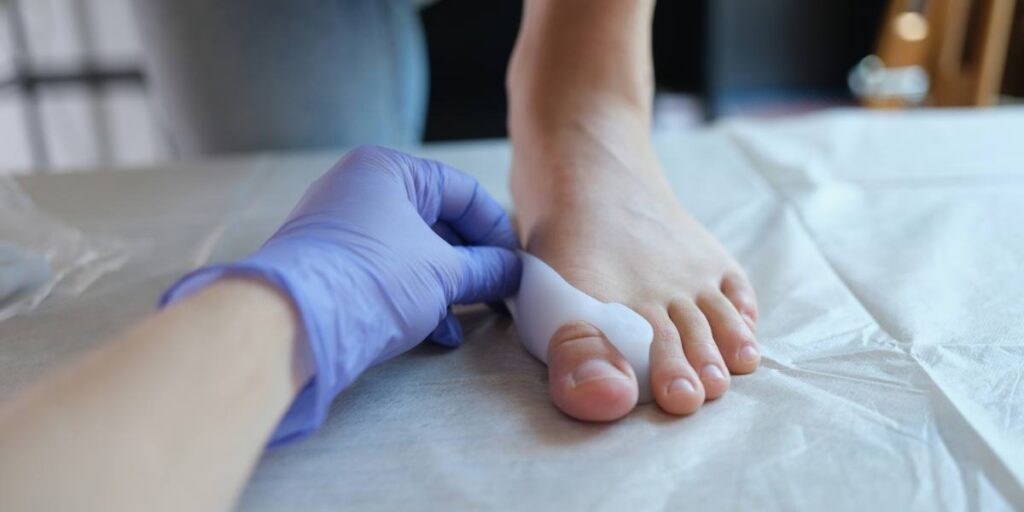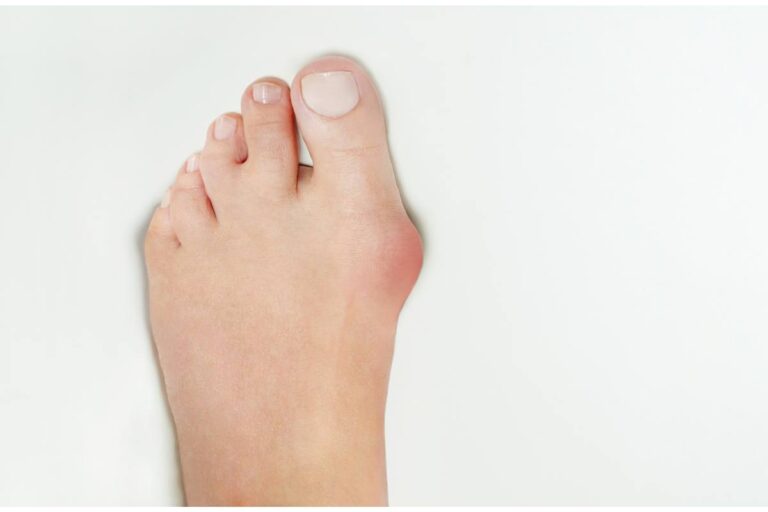By Dr. Bilal Khan, Limb Deformity Podiatrist
An estimated millions of Americans live with deformities of the big toe and fortunately, there are options for correction. A bunion, or hallux valgus in medical terms, is the resemblance of a bony bump on the inside of the foot at the big toe joint. Bunions develop when the big toe drifts toward the outside of the foot, while the metatarsal (the bone behind the big toe) moves toward the inside of the foot. This drifting may be caused by an unstable joint in the midfoot which allows the bones to shift out of alignment.
WHY DOES MY BUNION HURT WHEN I WALK?
The reason you may feel pain when walking is that much of your weight is centered on that bunion, causing it to become inflamed because the bunion itself is not meant to support your body weight. More than likely, your shoe will also be rubbing against your bunion, and this can cause painful friction that will result in additional pain as you walk. In addition, if you have rheumatoid arthritis, the joint may swell and develop a bursa, which is a fluid-filled sac. Tight-fitting shoes can aggravate this sac and cause even more pain.
WALKING BAREFOOT WITH BUNIONS – GOOD OR BAD?
It might be tempting to walk barefoot or to wear flip-flops because of the freedom they give your bunion. However, this is typically not a good idea because there won’t be any arch support for your feet, which can cause uneven weight distribution. At a time when your feet are already stressed, walking barefoot with bunions takes away one means of support from your feet.

OPTIONS FOR BUNION TREATMENT
For less developed bunions, your physician may recommend various treatment options such as using ice packs, warm soaks, and non-steroidal anti-inflammatory medications such as ibuprofen or aspirin. Whirlpools and massages may also provide relief. For more advanced bunions, however, your physician may suggest surgery. When surgery is indicated, a minimally invasive surgical (MIS) procedure may be warranted versus the traditional open approach to bunions.
BENEFITS OF MINIMALLY INVASIVE SURGERY
Minimally invasive surgery is done through very small incisions instead of the large, open incisions used in traditional surgery. The surgery is performed with small surgical instruments that reduce damage to muscles and surrounding soft tissue. The smaller instruments used cause less scarring and the incision scar is very small in size compared to a traditional surgery scar. Most incisions done by MIS require little to no stitches. The return to baseline activity levels is much quicker than the traditional approach Regardless of whether or not your bunions are affecting the way you walk, you’ll likely want to speak with our physicians at Florida Foot Specialists to understand your treatment options.
Dr. Khan received his undergraduate education at the University of Alabama, attended a one-year post-baccalaureate program at Virginia College of Osteopathic Medicine, and graduated medical school from Scholl College of Podiatric Medicine in North Chicago. After graduation, Dr. Khan completed a 3-year surgical residency at the International Center of Limb Lengthening at Sinai Hospital in Baltimore, Maryland.
The Residency program also had affiliations with Baltimore and Washington DC Veterans Affairs Health Centers. Dr. Khan has recently completed International medical mission trips providing care to communities that are less fortunate and have little to no access to care. Dr. Khan is well published in journals with his expertise in minimally invasive bunion surgery and correction of deformities including but not limited to brachymetatarsia (short toes).
Dr. Khan is welcoming new patients at this time. If you have any questions or would like to schedule an appointment, call (561) 447-7571 today!
FLORIDA FOOT SPECIALISTS
ADNAN SHARIFF, DPM
BILAL KHAN, DPM
RONNIE GRIESSMAN, DPM
Boca Raton (561) 447-7571
www.floridafootspecialists.com


